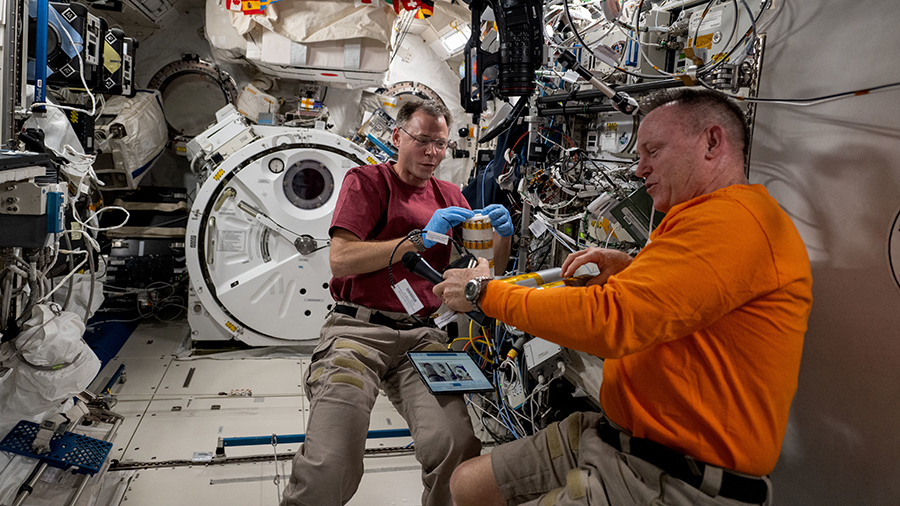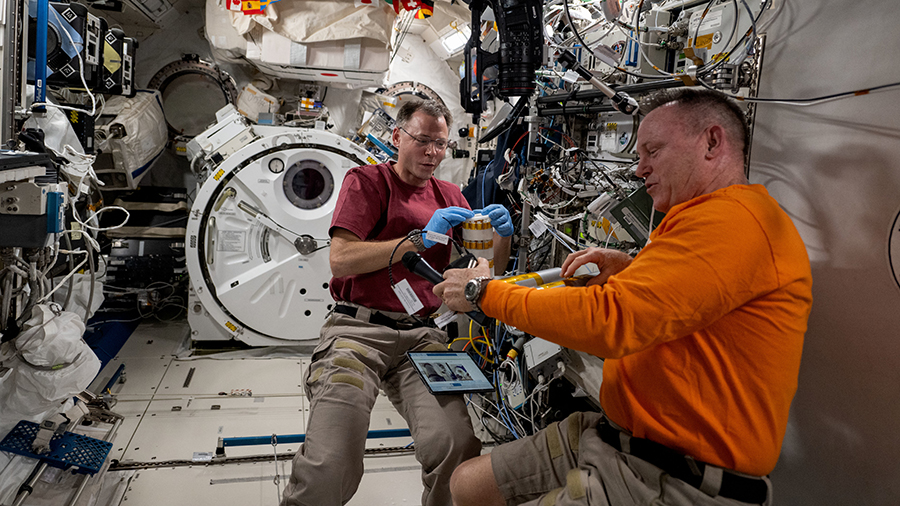
Wednesday’s research schedule aboard the International Space Station was packed with DNA-like nanomaterials, ultrasound scans, and a variety of advanced science hardware maintenance. The Expedition 72 crew also continued its ongoing life support and systems servicing ensuring the upkeep of the orbital outpost.
NASA Flight Engineers Suni Williams and Nick Hague continued exploring manufacturing DNA-like nanomaterials to develop therapies and treat space-caused and Earthbound conditions on Wednesday. The duo processed and imaged messenger RNA (mRNA) samples in the Kibo laboratory module’s Life Science Glovebox to evaluate their quality in space. The results will be compared to Earth-developed samples testing the hypothesis that space-manufacturing will create superior vaccines, regenerative medicine, and more.
NASA Flight Engineer Butch Wilmore kicked off the DNA therapy manufacturing experiment by relocating a laptop computer to support the biotechnology study. Afterward, Wilmore replaced hardware and experiment samples inside the Combustion Integrated Rack continuing a study that observes how solid fuels burn in microgravity potentially increasing spacecraft fire safety.
NASA Flight Engineer Don Pettit spent most of his day transferring biology hardware from an incubator to a glovebox located inside Kibo to study the effects of space-caused inflammation. Following that, the four-time space station visitor spent the rest of the afternoon on orbital plumbing tasks in the Tranquility module.
Roscosmos Flight Engineers Ivan Vagner and Aleksandr Gorbunov scanned their stomachs with an ultrasound device after breakfast on Wednesday. The cosmonauts were exploring how the digestive system adapts to the long-term weightless environment aboard the orbital outpost. Vagner and Gorbunov later joined Flight Engineer Alexey Ovchinin and checked the Zvezda service module’s telerobotically operated rendezvous system, or TORU, that can be used to control Roscosmos spaceships from the station. Finally, Ovchinin and Vagner tested ways to improve communications with international crews and flight controllers while Gorbunov checked thermal sensors inside the Zarya module.
The International Space Station is orbiting higher today after the Progress 89 cargo craft docked to the rear port of Zvezda fired its thrusters for over 31 minutes. The orbital reboost places the station at the correct altitude for the Progress 90 resupply mission planned to launch next week after the departure of the Progress 88 cargo craft.
Learn more about station activities by following the space station blog, @space_station and @ISS_Research on X, as well as the ISS Facebook and ISS Instagram accounts.
Get the latest from NASA delivered every week. Subscribe here: www.nasa.gov/subscribe

